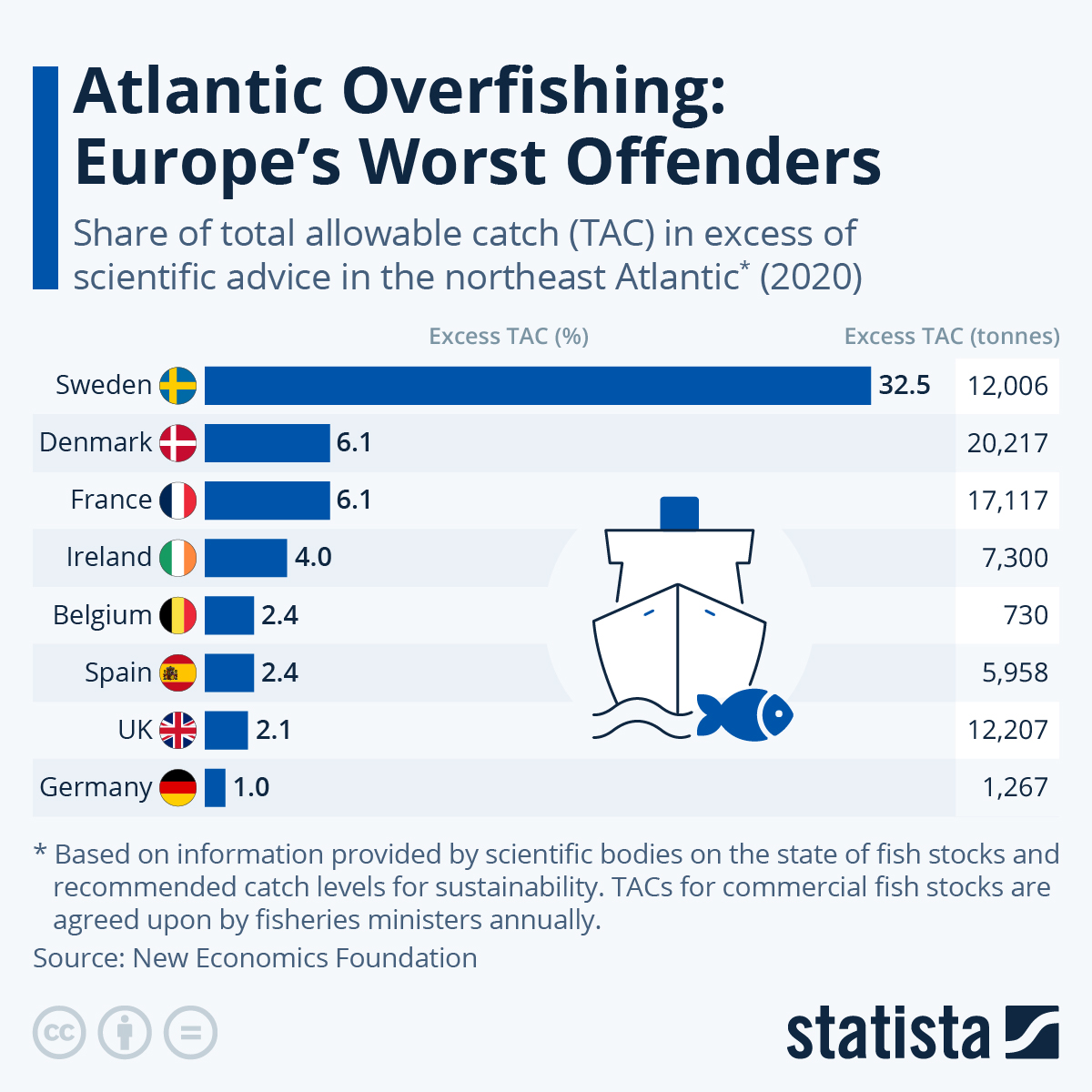Each year, agriculture and fisheries ministers decide on total allowable catches (TACs) for commercial fishing. Scientific bodies, such as the International Council for the Exploration of the Sea (ICES), provide information on the state of fish stocks around the world and recommend maximum catch levels per zone to ensure sustainable fishing. However, this scientific advice is all too often ignored by the authorities, jeopardizing the sustainability of marine resources.
According to the latest report from the New Economics Foundation, the European countries shown in this infographic are the worst offenders for this, having on numerous occasions set their fishing quotas in the North-East Atlantic in excess of the sustainability recommendations in recent years. Sweden exceeded its recommended TAC by almost 33 percent in 2020 (the latest year available), equivalent to 12,000 tonnes of fish, followed by Denmark (6 percent, 20,000 tonnes) and France (6 percent, 17,000 tonnes). Ireland, Belgium, Spain and the UK all exceeded their targets by between 2 and 4 percent.
The year before, in 2019, the overshoot of the sustainable fishing threshold in the zone was even more pronounced: 7 percent of the recommended TAC for Spain, 9 percent for France, 10 percent for Belgium, 18 percent for Germany, 20 percent or more for Denmark, the United Kingdom and Ireland, and 52% for Sweden.





















